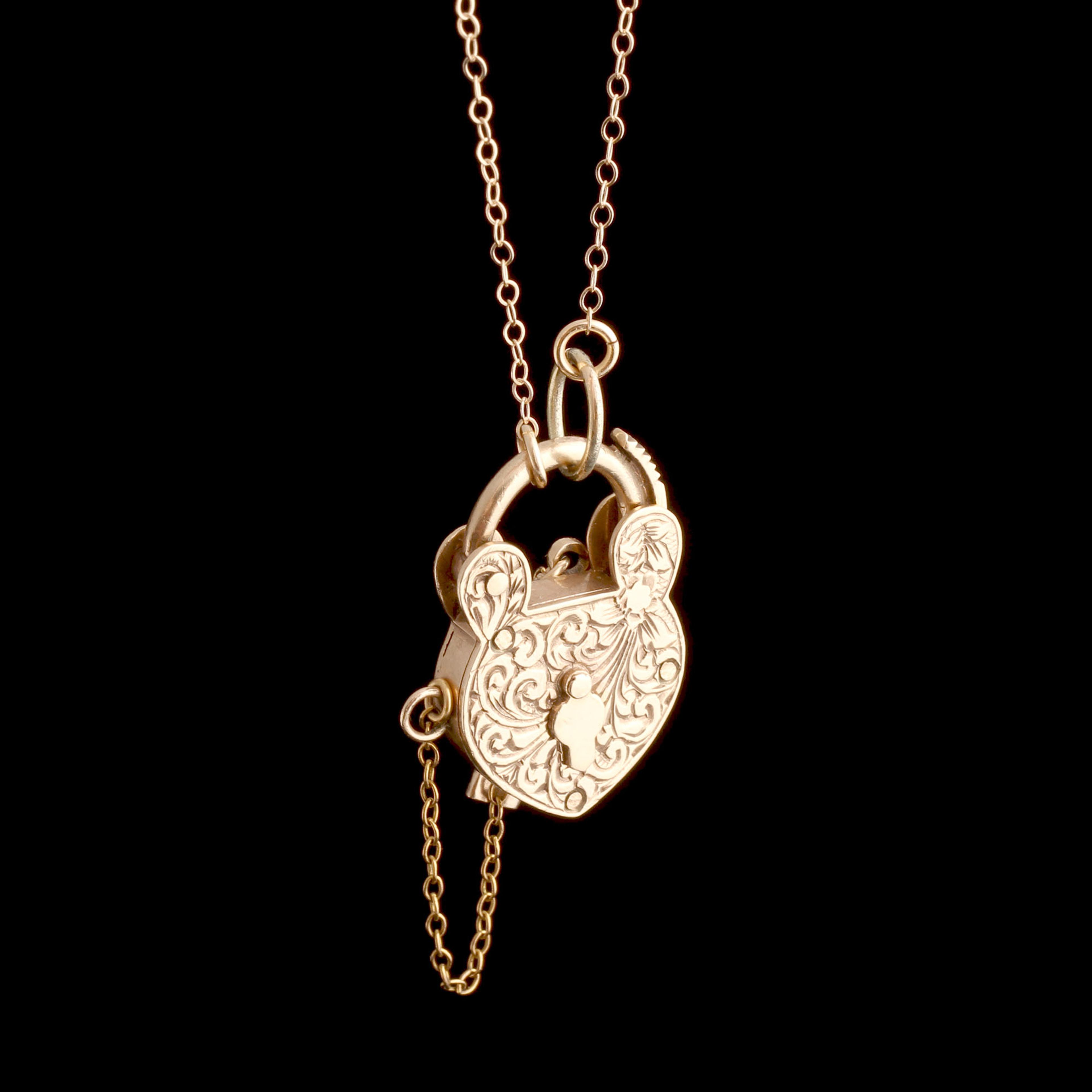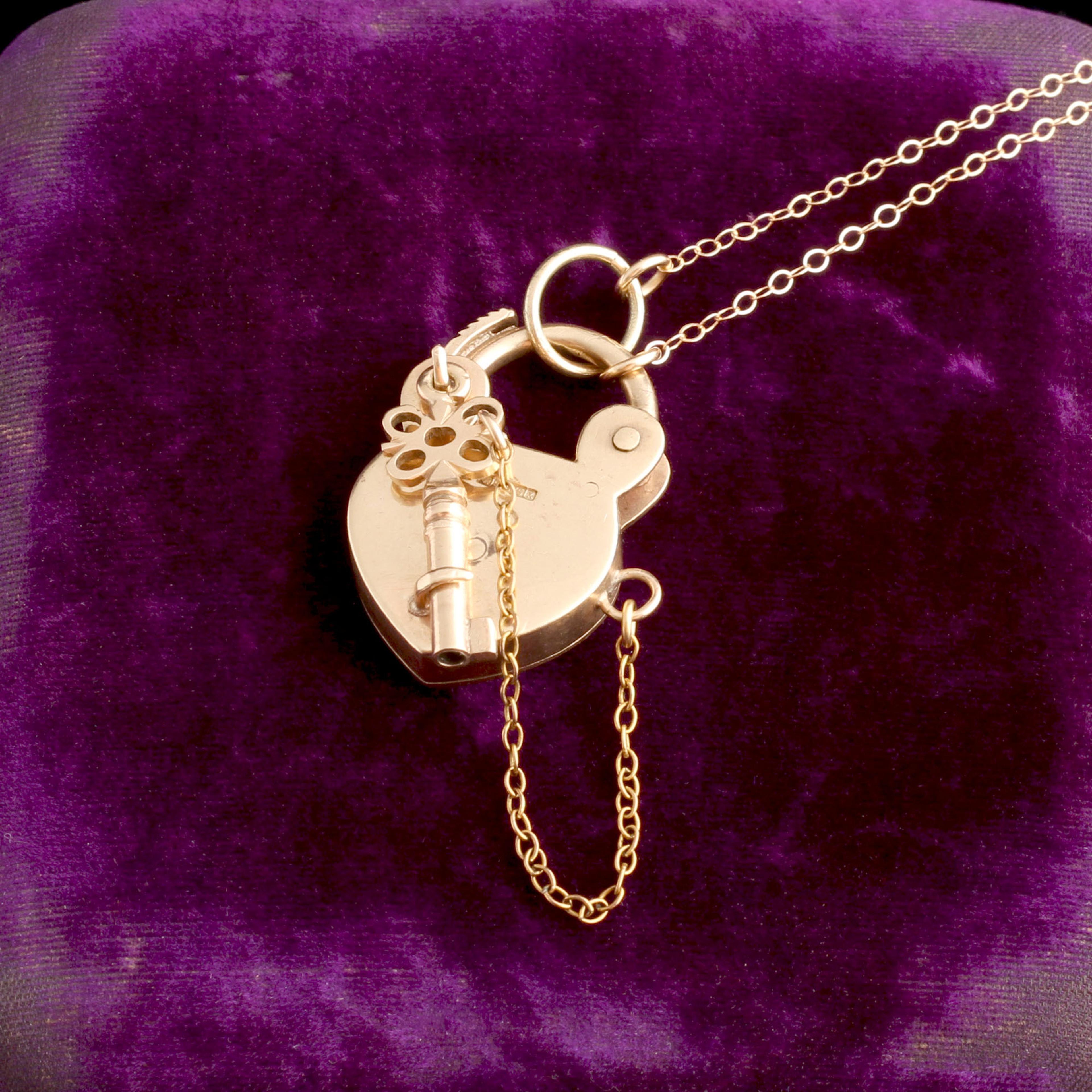If we didn't read the Sheffield assay mark for 1965 on the back, we would have mistaken this retro heart lock pendant for Victorian. The craftsmanship and novelty factor? High. The key cover swivels, and the key is actually necessary to open and close it. There's even a little peg and crook on the back to hold the key in place when you're not using it. The engraving is as fine as any 19th century goldsmith could have done it.
thedetails
- Materials
9k gold (marked), new 14k gold chain
- Age
Sheffield assay mark for 1965
- Condition
Very good - JP makers mark; British hallmarks
- Size
1" x 3/4" padlock, 7/8" key, 17" chain
Need more photos?
Send us an email to request photos of this piece on a model.

Aboutthe
RetroEra
1935 — 1945
Platinum was reserved for military use, so jewelers began relying heavily on gold and experimenting with colored alloys and different finishes. Retro jewelry designs are marked by asymmetry, motifs borrowed from industrial design, and exaggerated scale. Thanks to a hugely successful advertising campaign begun in the 1940s and funded by De Beers, the phrase “a diamond is forever” was coined and diamond rings were touted as the ONLY acceptable type of engagement ring. Carefully worded ads instructed men on how to choose a stone, and what to spend (“two months salary!”). The Gemological Institute of America developed the so-called “4Cs” of diamond grading, which was a scientific system for measuring the color, clarity, cut and carat weight of every single diamond. The costume jewelry industry, having only been established a few decades before, began to flourish. Centered in Providence, Rhode Island, and surrounding New England towns, companies like Trifari, Monet, Hobe, and Vendome prospered as consumers gobbled up inexpensive machine-made jewels.
please note:Terms of Sale
Antiques can be returned unworn and in original condition within 10 days of delivery for an exchange or refund minus the cost of shipping. Once a piece has been altered, including ring re-sizing, it is FINAL SALE.





